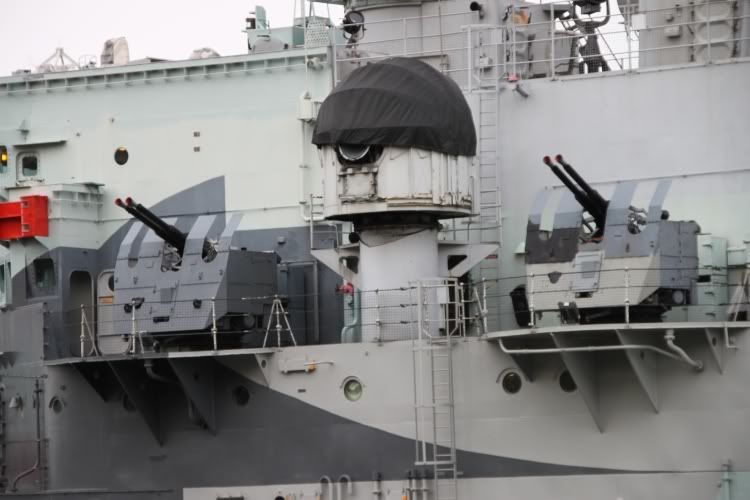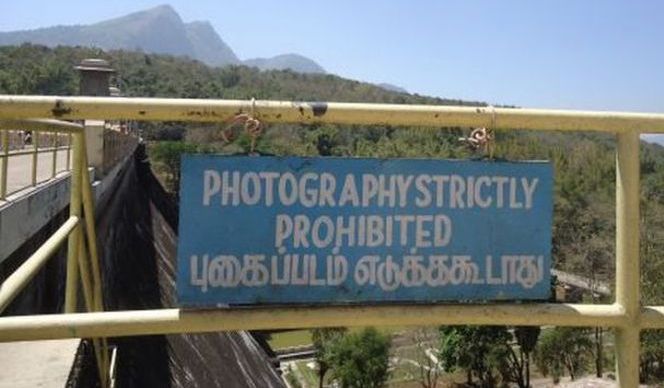
When I first saw the ship from tower bridge many many years ago, I immediately fell in love with the ship because I could finally put myself in my bibliographic dream. This shot is not as good, as you have scaffolding all over the ship and the silly gangway breaks up the lines, but it is a sleek and beautiful ship. It is a lethal nimble ship. Sailors love some ships, and this is one of them. My HMS Ulysses came to life for me, real life. I was walking around with my mouth open, the book flicking in my mind and imaging this ship pitching and rolling in the massive Arctic Ocean Murmansk runs. The bow (now covered by scaffolding) slicing and hissing through the mountainous waves. Just look at the ship, it just looks dangerous, ready to leap into actions under bone jarring sounds of action stations even though it is moored inside a very civilised urban area in a river.

Here are the fore main turrets. 6 inch guns capable of belching out a shell which can go up to 20 kms, and the ship has 12 of these big suckers, two triple turrets in the fore and two in the aft section. Automated munitions handling (see the left side of the photo below where you can see the rows of red painted shells in the automated magazine belt) meant that the ship could lay down some serious fireworks on the designated target, guided by some pretty good (for that time) calculators, radars and other equipment, the chances of these banshee shrieking shells landing on the target was quite high.

There is a photograph on the ticket hall which shows a sea man curled up in a hammock. Looks quite cosy, but think back to those times when central heating was really not available on these steel monsters. Heating was almost nil, the steel walls would mostly be weeping condensation and coupled with the high humidity and leaks in these ships, it would be ferociously cold, high humidity, rolling and pitching, not enough food (can't really cook or distribute food when the ship is pitching and rolling up to 20-30 degrees). And then you get to sleep for 1-2 hours before the klaxon wakes you up for another action station call.



This is the aft end of the ship showing the two main turrets, the 4 inch and pom pom guns which could be used against surface and air borne targets. The round mushroom thing in the middle is a searchlight. In many ways, the searchlight was as much as a weapon as a cannon as it would help in highlighting enemies, searching for survivors or U-boats or lighting up ships which have been torpedoed. Vital piece of equipment. But imagine yourself being placed in one of these locations during the arctic convoys, out in the open, with spray reaching up to you, wet, icy, totally freezing but unable to relax as you are supposed to be one of the eyes and ears of the big ship. What a job!

The anchor chains.

A lifeboat on the right and the ship’s crane in the middle.

The main mast with radar, radio antenna, sensors, lights and the vast paraphernalia of equipment that no self respecting warship in the WW II was without. But again imagine biting cold, freezing wind, spikes and shards of ice flying almost horizontally and you are an able seaman asked to climb up to fix anything that is broken or to make signals. In extreme cold, metal becomes weak and brittle. Back in the WW II times, metallurgy was not that advanced and one would still find metal components breaking off, which meant that frequently people would have to climb up the tower to repair the equipment. This is not considering the impact of ice formation on all these moving parts. Lubricants would freeze at the sheer horribly low temperatures of the Arctic and they would use alcohol thermometers to measure the temperature, mercury would have long since frozen solid. Here is a great photo of what the ship looked like totally ice encrusted during an Arctic Convoy.
The ship also participated in other theatres of WW II, the Korean War and flew the flag in a variety of other oceans. It would have been destined to become a scrap heap oe ended up as razors but thankfully, it was protected. It is now part of the Imperial War Museum and still thrilling the millions of people who visit this famous British landmark. While you cannot visit all parts of the ship, it is well worth it to poke around, will take you about 2-3 hours. But before you visit the ship, do see if you can read the book HMS Ulysses. It will make the ship come alive for you.
Lord bless the ship and all who sailed in her. The full slide show here.

No comments:
Post a Comment